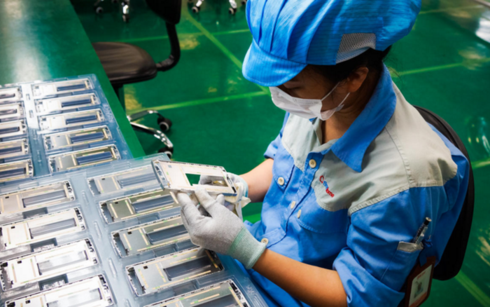In early June 2017 Bkav launched the Bphone, which it touts as the first smartphone designed and made in Vietnam.

bkav launch of smartphone receives lukewarm reception hinh 0 The cost of the sleek device, which comes in six models,ranges US$450-US$925, and looks like the iPhone 4 with a bigger, 5-inch screen versus the Apple 3.5-inch display.
The Bphone six variations are – 16GB black; 64GB in black, white or champagne; and limited edition 128GB gold-plated black or white.
The Bkav marketing strategy is to mimic that followed by Xiaomi in China and capture a dominating share of its home market before attempting a wider foray into the larger international market.
The major difference is, of course, is that Xiaomi built up its following in China with an economically low-priced quality smartphone, whereas Bkav is attempting to do the same with a rather high-priced gadget.
Another obstacle that Bkav faces is that most Vietnamese customers are perfectly happy with their Apple iPhone or the Galaxy devices offered by Samsung. As well, most Vietnamese workers by and large don’t earn a lot of money and the Bphone is just too expensive for them.
Still many others aren’t really buying into the notion that the Bphone is a Made in Vietnam product as advertised and think it may be just an offensive marketing ruse to trick Vietnamese consumers into obtaining it.
Designed in Vietnam
Bkav has an estimated 150 workers who build some of the parts that go into the Bphone and import the rest that are assembled at the company’s two factories in Hanoi, said Vu Thanh Thang, vice president and director of the Bkav hardware division.
Mr Thang suggested that there are plans on the drawing board for Bkav to construct and open a much larger factory in the Hoa Lac Hi-Tech Park in suburban Hanoi, if the Bphone becomes a success in the marketplace.
He claims that Bkav invested roughly US$20 million over a 4-year period in developing the Bphone that runs on top of the Google Android operating system— the same one that powers most of the smartphones around the globe.
It’s the pufferywith the words – Made in Vietnam – that causes Bkav the most problems and troubles consumers.
Most consumers realize the truth that the Bphone is a Chinese device, not really any different than those of other Vietnamese vendors, such as MobiiStar, who have contracted with Chinese manufacturers to design and build smartphones thatthey affix their label too.
The marketing ploy really backfires when one considers that the Bphone also uses aprocessor designed by Qualcomm,the American multinational semiconductor and telecommunications equipment giant headquartered in San Diego, California.
However, CEO Quang of Bkav continues to attempt to argue that the Bphone is a Made in Vietnam product based on his purported claim that the company spent US$20 million developing it.
However, he conveniently forgets to mention that Bkav is one of the biggest security software companies in Vietnam, with a branch in Mountain View, California – the heart of Silicon Valley.
And he doesn’t state where the US$20 million investment, if it indeed is accurate, originated.
Bkav low profile
The low profile of Bkav is the critical problem.
The iPhone and Apple or Galaxy and Samsung logosin Vietnam are a big draw to customers that Bkav must overcome.
The company’s challenge is to convince people to abandon their favourite brands for a purportedly Made in Vietnam phone, while handing over hundreds of US dollars for it. It’s a hard sell for which Bkav executives don’t yet have the answer.
Vietnamese just don’t like the Made in Vietnam label being used as a marketing ploy, said one customer.
Bkav received a lukewarm reception with its Bphone launch, selling just 11,822 units, which compares to the 10 million iPhone 6 and 6 Plus units Apple sold in the first weekend they were on the market in 2014.
The figures speak volumes in highlighting the magnitude of the problems Bkav faces with the launch of the Bphone, not the least of which is credibility.
VOV